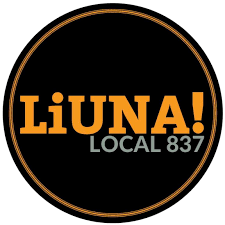This six and a half hour program for construction workers is based on the requirements of the new MOL training program standard.

This six and a half hour program for construction workers is based on the requirements of the new MOL training program standard. This full day program is divided into two sessions, a three-hour basic theory session and a three and a half hour working at heights practical equipment session that includes a practicum. Note that the first module allows for a maximum of twenty four participants while the second module with hands on demonstrations must only have twelve participants for the sessions.
This will require some coordination for larger workplaces with more than twelve workers to train. Due to the nature of the hazards and the required training standards both a written evaluation and a practicum are required. Each participant must score a 75% score to pass and receive a training card.
In the first session Basic Theory, participants will learn: the roles and responsibilities of the employer, constructor, supplier, supervisor and worker including the workers right to know, participate and refuse unsafe work the regulations that address fall hazards, fall protection equipment and working at heights projects working at heights hazards and the hierarchy of controls to protect workers safe work procedures and plans to identify and control working at height hazards the advantages and disadvantages of various types of ladders, to inspect ladders and to safely position and use ladders the distinctions between and use of travel restraint, fall restricting and fall arrest system and the basic components of each system the setup, use, maintenance and storage of travel restraint and fall arrest system the use of bump lines, barriers, guardrails and safety nets to determine fall distance to prevent a worker from striking the ground or an object below the work level the health effects of bottoming out, the pendulum effect and suspension trauma on the body once the fall arrest system has been initiated In the second module Practical Equipment Use, participants get a hands-on demonstration of fall protection equipment and systems.
Topics addressed in the module include: regulatory requirements and procedures for use of bump lines, barriers, guardrails and safety nets regulations, use, inspection, limitations, storage and procedures for travel restraint, fall restricting and fall arrest systems requirements for guard rails use of vertical, horizontal and retractable lifelines set up and use of rope grabs for both fall arrest and ladder use determining correct anchor points and regulations and procedures for safe use of anchor points procedures to maintain tie-off including when changing anchor points and with elevating work platforms key components of a fall rescue plan and emergency procedures. Note: this is not a complete list of topics for the program.
Upgrade Your Skills
Our programs are broken into two distinctive categories: Hard Skills, and Soft Skills. The purpose of this training is to improve the employability of workers in Ontario, and to open up the vast opportunities to those workers who take a proactive approach to career management.
© 2025 coursetakers.com All Rights Reserved. Terms and Conditions of use | Privacy Policy